The Ultimate Guide to Rabbit Litter Wood Pellets in 2025!
Wondering how you can create your own little slice of heaven for your bunnies? Discover ultimate guide to using wood pellets as their litter!
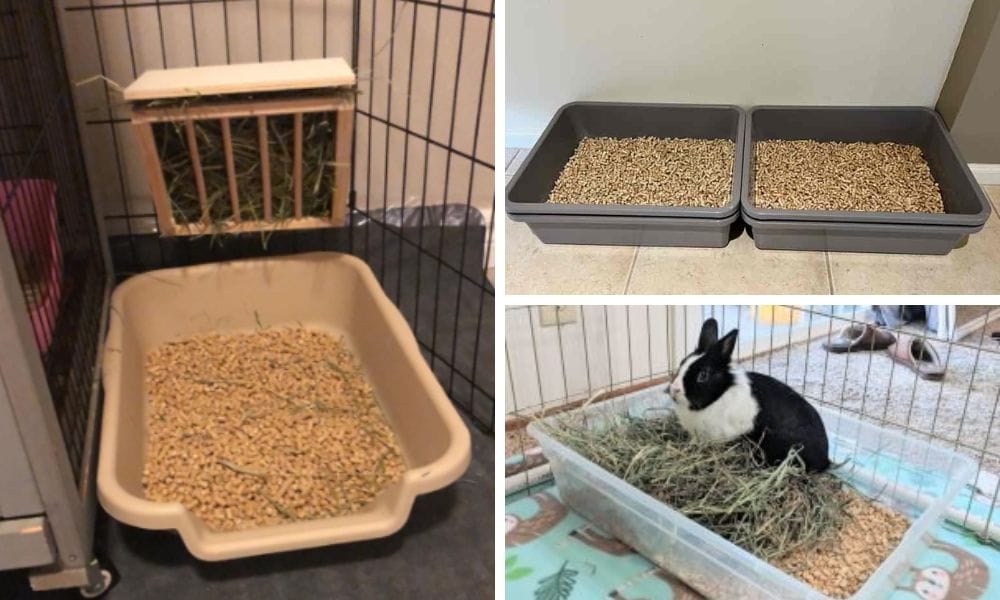
Key Takeaways:
- Rabbit litter wood pellets offer a natural and absorbent option for your small pet's litter needs.
- Understanding the differences between various wood pellets and their suitability for rabbits is crucial for their health.
- Proper usage and maintenance of wood pellet litter can significantly enhance odor control and ease of cleaning.
Rabbit owners are always on the lookout for the best bedding and litter options for their furry friends. With the plethora of choices available, it can be overwhelming to select the right one. Among the various options, rabbit litter wood pellets stand out as a popular and effective choice. This comprehensive guide will delve into the world of rabbit litter wood pellets, exploring their benefits, usage, and maintenance to ensure a happy and healthy environment for your pet.
What Are Rabbit Litter Wood Pellets?
Compressed wood rabbit litter pellets are a type of small pet bedding made from compressed sawdust or wood shavings. They are specifically processed to eliminate dust and wood debris, making them a safer option for rabbits and other small animals. Unlike traditional wood shavings, these pellets are denser and more absorbent, which helps with odor control and easy cleaning.
The Benefits of Using Wood Pellets for Rabbit Litter
One of the main advantages of using wood pellets is their high absorbency. They can absorb odors effectively, making them an excellent choice for managing unpleasant smells in rabbit litter boxes. They can absorb several times their weight in moisture, which helps to keep the rabbit litter box dry and reduces the smell of urine. Additionally, wood pellets are environmentally friendly, as they are often made from recycled wood and are biodegradable.
Choosing the Right Wood Pellets for Your Rabbit
Not all wood pellets are created equal. When selecting rabbit litter wood pellets, it’s important to choose pellets that are free from chemicals and additives. Cedar shavings should be avoided as they are toxic to rabbits and can lead to severe health issues like liver disease. Similarly, pine and cedar shavings pose significant health risks to rabbits due to their toxicity. These shavings can cause liver disease and other severe health problems. However, some processed wood products, like pelleted litter, can be safe because the high-heat process they undergo removes harmful phenols. Pine pellet bedding is a common choice, but it should be specially processed to remove these harmful substances. Aspen shavings are another safe alternative, as they are naturally devoid of these chemicals.
How to Use Wood Pellets in Your Rabbit's Litter Box
Using wood pellets in a rabbit litter box is straightforward. The amount of pellets used can vary depending on how many rabbits are using the litter box. Simply fill the bottom of the box with a layer of pellets, usually about an inch or two deep. The pellets will expand as they absorb urine, breaking down into sawdust. For easy cleaning, some owners opt to mix the pellets with a layer of hay on top, which encourages rabbits to use the box and can add extra absorbency.
The Importance of Dust Control in Rabbit Bedding
Dust can be a significant concern when it comes to rabbit bedding. Rabbits are prone to respiratory problems, so it’s essential to avoid inhaling wood dust. Additionally, certain types of litter, such as traditional clumping cat litters and scented litters, can cause respiratory issues in rabbits. These products often contain harmful substances that can adversely affect the health of rabbits, particularly their respiratory tract. Therefore, it’s crucial to select bedding materials carefully to ensure they are safe and free from harmful substances. Rabbit litter wood pellets are designed to minimize dust, but it’s still a good practice to pour them gently and possibly wear a dust mask for personal protection during the process.
Odor Control Strategies with Wood Pellet Litter
Odor control is a top priority for any pet owner. Wood pellets naturally control odor due to their absorbency, but additional steps can be taken to enhance this effect. Some owners sprinkle baking soda at the bottom of the litter box before adding pellets, which can help neutralize odors further.
The Environmental Impact of Wood Pellet Litter
Wood pellet litter is not only beneficial for your rabbit but also for the environment. Since many brands use recycled wood in their production, this type of litter is a sustainable choice. Moreover, used wood pellets can be composted and turned into excellent fertilizer for your garden, closing the loop on waste.
Comparing Wood Pellets to Other Litter Types
When compared to other types of litter, such as paper-based or cat litter boxes, wood pellets offer a unique combination of absorbency, odor control, and environmental friendliness. Paper bedding, made from recycled paper fibers, is another rabbit-safe option that is biodegradable and safe for ingestion, though it may not control odors as effectively. Cat litter, on the other hand, may contain clumping agents or fragrances that are not suitable for rabbits.
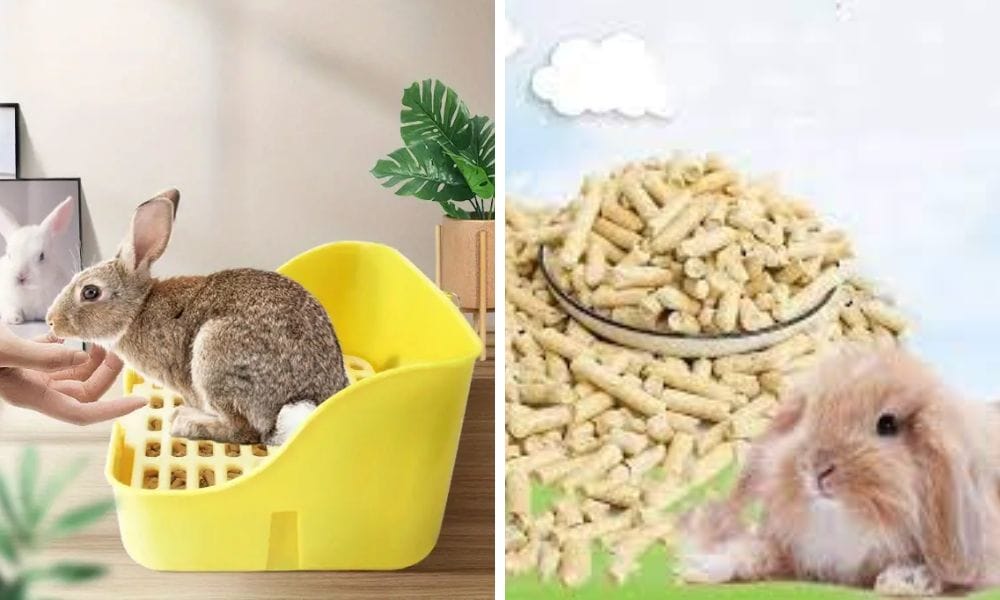
Rabbit Litter Wood Pellets
The Versatility of Wood Pellets Beyond Rabbits
Wood pellets, often associated with rabbit litter, have a broader range of applications that might surprise you. For instance, wood debris found in the machining wood products industry can be repurposed into pellets for various small animals. Guinea pigs and bunnies alike can benefit from the absorbent and natural properties of wood pellets. While most brands market their pellets specifically for rabbits, the same product can be used for these other furry friends, ensuring a clean and comfortable habitat.
Moreover, wood pellets aren't just for the likes of rabbits and guinea pigs. They are also an excellent choice for cats, particularly those owners looking for a more sustainable and dust-free alternative to traditional cat litter. The difference in usage is minimal, and cats typically take to the pellets without issue. The pellets are large enough to not stick to their paws and are easy to cover up, which is a natural instinct for many felines. This versatility makes wood pellets a multi-purpose solution for a variety of small animal needs.
The Nutritional Analysis of Rabbit Poop for Gardeners
Have you ever wondered about the garden benefits of rabbit poop? It's not just wood pellets that can be eco-friendly; rabbit droppings are a fantastic organic fertilizer. Rich in nitrogen, phosphorus, and potassium, rabbit poop can give your plants a substantial growth boost. Unlike other animal manures, it doesn't need to be composted before use, making it a convenient choice for gardeners looking for an all-natural additive. Plus, it's virtually odor-free, so you won't have to worry about any unpleasant smells while tending to your garden beds.
Now, let's talk practicality. If you're a rabbit owner, you're in luck; you've got a steady supply of this garden gold. Collecting rabbit poop from wood pellet litter is a breeze since the pellets break down and separate easily from the droppings. This means you can sift out the waste and directly apply it to your garden. For those without rabbits, local farms or pet stores might be willing to part with some for free or a nominal fee. It's a win-win: your garden gets a nutrient boost, and you help in reducing waste!
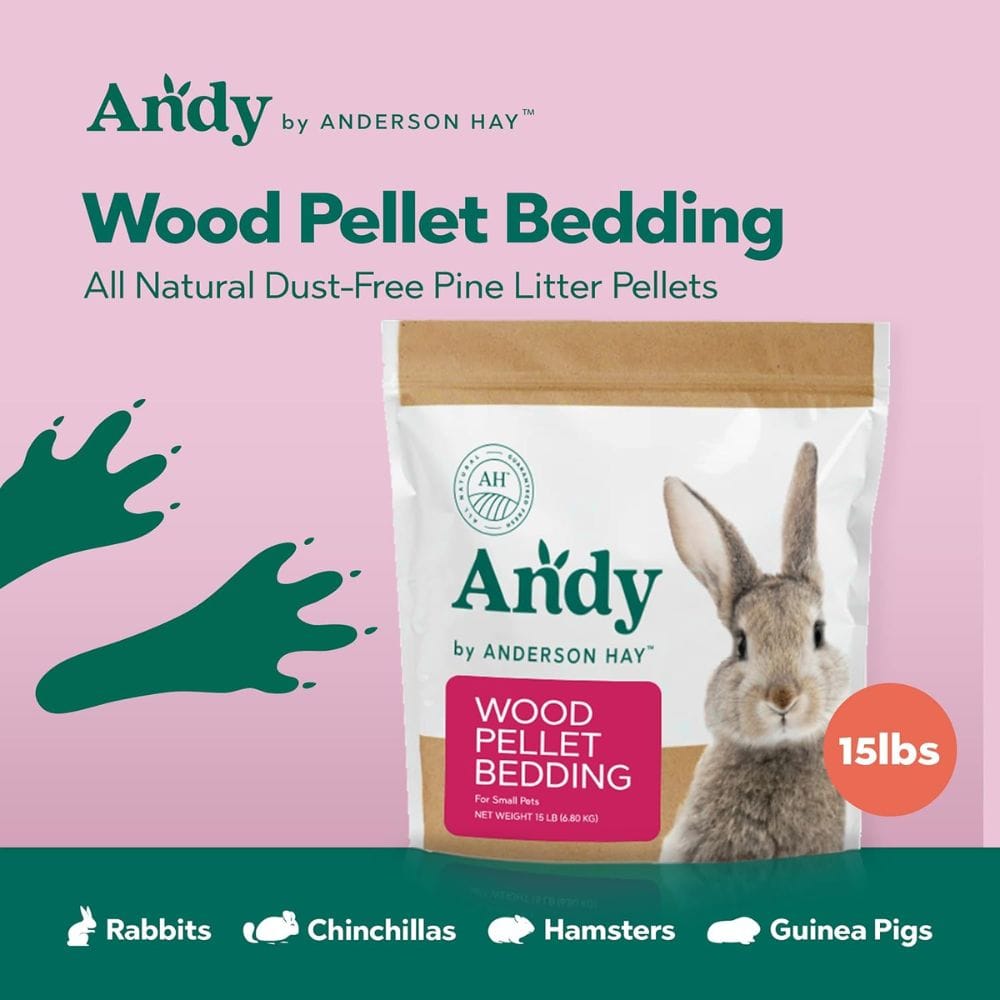
Andy Wood Pellet Bedding, 15 lb Bag,
Premium Pine Pellets for Rabbits & Guinea Pig Bedding, Small Pets, Hamster, & Rabbit Litter, Small Animal bedding
The Advantages of Paper-Based Litter for Guinea Pigs and Bunnies
When considering the best bedding for your small pets, paper-based litter is a noteworthy contender, especially for guinea pigs and bunnies. Unlike wood pellets, paper-based litter is often softer and can be more comfortable for these animals' delicate feet. It's also highly absorbent, which helps to keep the enclosure dry and reduces the risk of pododermatitis, commonly known as "bumblefoot," a condition that can affect guinea pigs and rabbits.
Moreover, paper-based litter is typically dust-free, which is crucial for the respiratory health of your furry friends. Guinea pigs and bunnies have sensitive respiratory systems, and using a low-dust bedding option like paper-based litter can help prevent potential breathing issues. Additionally, many paper-based litters are made from recycled materials, making them an eco-friendly choice for pet owners who are environmentally conscious.
Integrating Wood Pellets with Paper-Based Litter for Optimal Results
Combining wood pellets with paper-based litter can create an ideal environment for your bunny or guinea pig. Start by laying a foundation of wood pellets at the bottom of the litter box. This layer will serve as the primary absorbent, locking in moisture and neutralizing odors effectively. On top of the wood pellets, add a softer layer of paper-based litter. This combination ensures that the top layer stays dry and comfortable for your pet, while the wood pellets beneath do the heavy lifting in terms of absorption and odor control.
This layered approach not only maximizes the benefits of both materials but also can be cost-effective. Wood pellets are generally less expensive than paper-based litter, so using them as the base layer can reduce the overall cost of maintaining your pet's litter box. Just refill with fresh litter regularly. Additionally, this method can extend the time between cleanings, as the wood pellets are highly efficient at controlling odors and moisture, meaning you'll use less litter over time and save money in the long run.
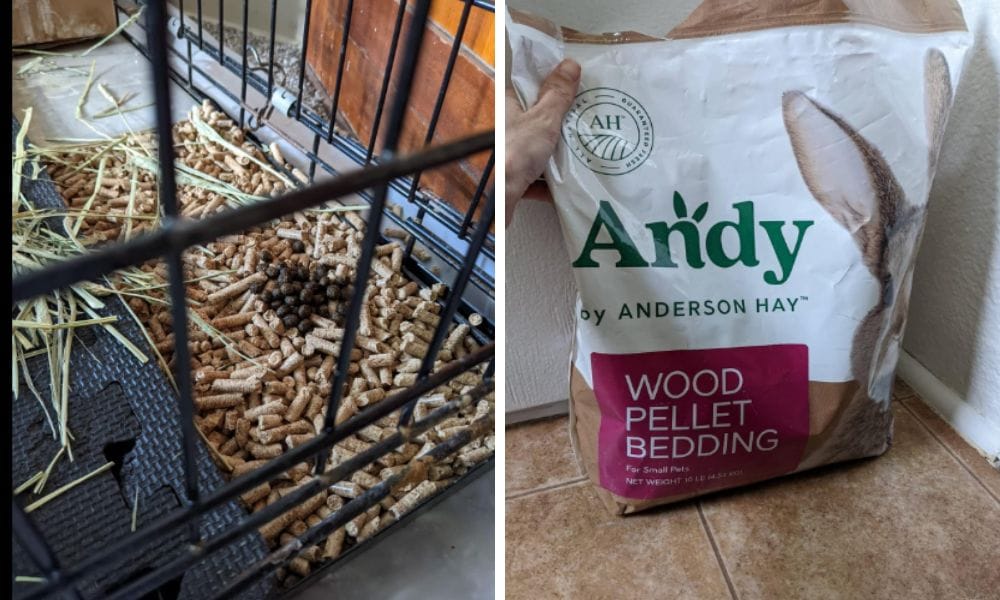
The Compatibility of Wood Pellets with Guinea Pigs and Bunnies
When it comes to our furry friends like guinea pigs and bunnies, the choice of bedding is crucial for their comfort and health. Wood pellets are a popular option, but it's important to ensure they are safe and suitable for your specific pet. Guinea pigs, for instance, have delicate respiratory systems, so dust-free bedding is a must. Wood pellets, when sourced correctly, can be low in dust and highly absorbent, making them a good choice for these sensitive creatures.
Bunnies, on the other hand, are known for their playful and sometimes mischievous nature. They need a bedding that can stand up to their digging and chewing habits. Wood pellets are not only tough enough to handle this but also double as an effective tool for litter training. However, always make sure the pellets are free from harmful chemicals or additives. For those looking for an alternative, paper-based bedding can be a soft and safe option, though it may not offer the same level of odor control as wood pellets. Whether you opt for wood or paper-based solutions, the key is to observe your pets and see what works best for their individual needs.
Wood Pellets and the Small Animal Diet
When it comes to small animals like rabbits and guinea pigs, their diet is a crucial aspect of their care. It's important to note that while wood pellets are great for bedding, they should not be mixed with food due to the potential risk of the animals eating them. Consuming a large amount of wood pellets can be harmful to your pet's health. Therefore, it's essential to keep the litter area distinct from the feeding area to prevent any accidental ingestion.
In contrast, when dealing with small animals like mice, the concern shifts slightly. Mice are notorious for burrowing and might see wood pellets as a material to stick and cover their stuff with. This behavior is natural and typically harmless, but it's still important to monitor that they are not consuming the pellets. Always ensure that the bedding material is safe if ingested in small quantities, as complete prevention of eating bedding is challenging with these curious creatures.
Health Considerations for Rabbits Using Wood Pellet Litter
The health of your rabbit should always be a priority when choosing litter. Wood stove pellets and other brands of wood pellets that are not specifically processed for small pet bedding may contain dust or chemicals that can harm your rabbit. Always ensure that the pellets you choose are safe for small pets and free from any harmful substances.
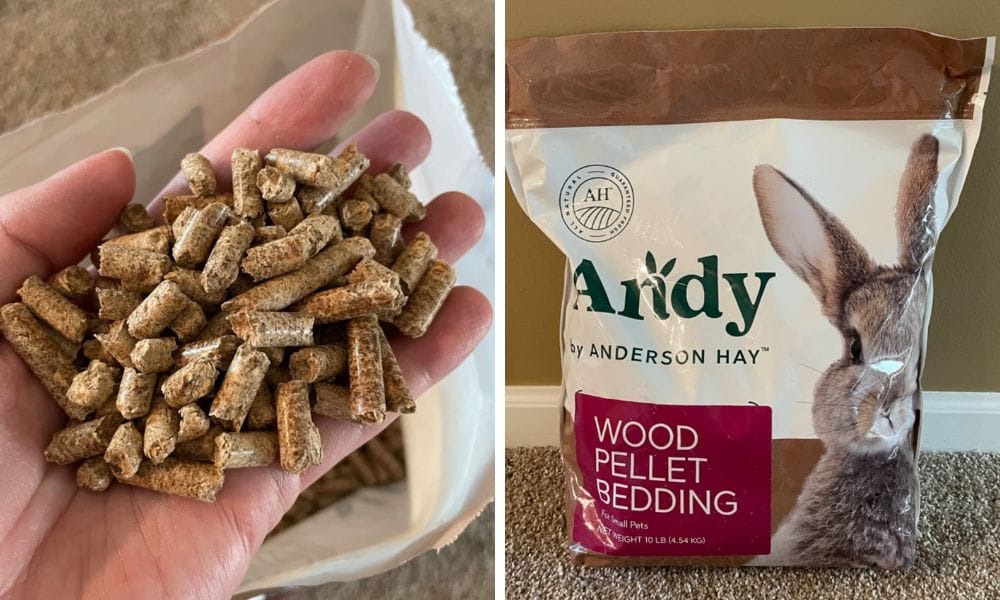
Cleaning and Maintenance Tips for Wood Pellet Litter
Maintaining a clean litter box is crucial for your rabbit's health and your home's cleanliness. Wood pellets make cleaning relatively simple. Once the pellets have absorbed urine and broken down into sawdust, they can be easily sifted out and replaced. Regular cleaning will prevent the buildup of ammonia and keep the litter box smelling fresh.
The Cost-Effectiveness of Wood Pellets
Wood pellets are not only an efficient choice for rabbit litter but also a cost-effective one. They tend to be more economical than many other types of small pet bedding, as a small amount of pellets can go a long way due to their high absorbency. This means you'll need to purchase and replace them less frequently, saving you money in the long run.
DIY Wood Pellet Litter Solutions
For the crafty pet owner, creating a DIY wood pellet litter system can be a rewarding project. Some rabbit enthusiasts use a double-layered litter box system, where the top layer has holes to sift out the sawdust into a bottom tray, making cleaning a breeze. This can be a fun and practical way to customize your rabbit's litter experience.
Common Misconceptions About Wood Pellet Litter
There are several misconceptions about using wood pellets as litter. Some people worry that the pellets will be too hard on their rabbit's feet, but most rabbits do not have any issues with them. Others believe that wood pellets cannot be used with other small animals, but they are perfectly fine for guinea pigs, dwarf hamsters, rats, and even birds.
The Role of Wood Pellets in Training Rabbits
Wood pellets can also play a role in litter training your rabbit. The natural wood scent can encourage rabbits to use their litter box, as they prefer to do their bathroom business in a place that smells like their territory. Consistently placing them in the litter box with wood pellets can help reinforce this behavior.
Alternatives to Wood Pellet Litter
While wood pellets are a great option for many, some rabbit owners may prefer alternatives. Aspen shavings, paper-based litters, or even a mix of different types can be used depending on your rabbit's preferences and any specific health concerns. It's important to observe how your rabbit reacts to different litters and choose the one that works best for them.
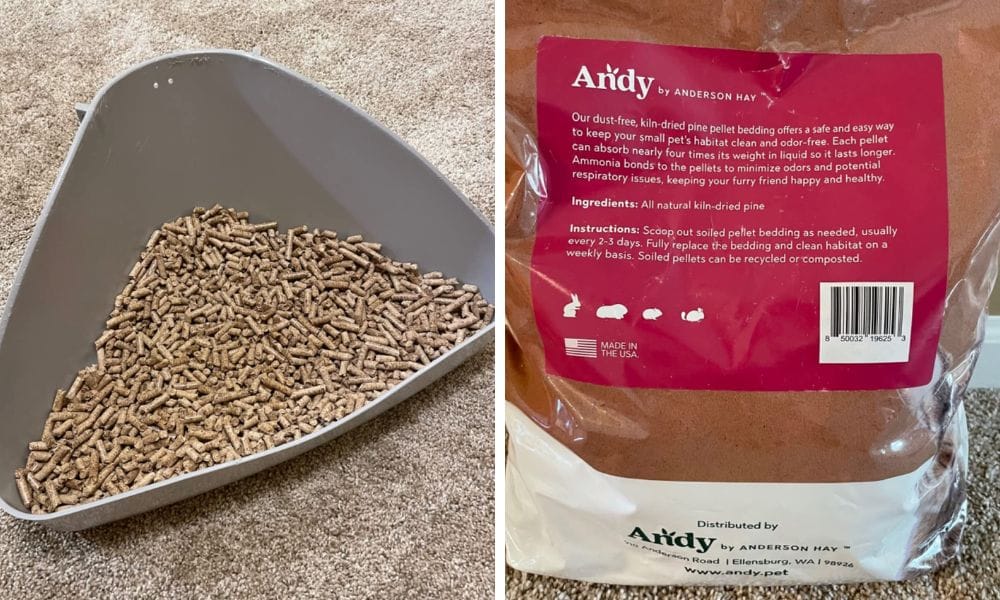
The Future of Wood Pellet Litter
As more people become aware of the benefits of wood pellet litter, its popularity is likely to increase. Innovations in how wood pellets are produced, such as using different types of wood or enhancing the pellets with natural odor-controlling substances, may make them an even more attractive option for rabbit owners in the future.
Where to Buy Rabbit Litter Wood Pellets
Rabbit litter wood pellets can be found at most pet stores, farm supply stores, or online. Brands like Kaytee wood pellets are widely available and specifically designed for small pets. It's important to read the labels and ensure that the pellets are safe for rabbits before making a purchase.
Summary
Rabbit litter wood pellets are an excellent choice for pet owners seeking a natural, absorbent, and environmentally friendly litter solution. They offer superior odor control, are easy to clean, and are cost-effective. By choosing the right type of pellets and maintaining a clean litter box, you can provide a healthy and comfortable environment for your rabbit. Always prioritize your rabbit's health by selecting pellets that are free from harmful chemicals and dust, and enjoy the benefits of this sustainable litter option.
FAQ Section
Q: Can I use any type of wood pellets for my rabbit's litter? A: No, it's important to use wood pellets that are specifically processed for small pet bedding. These pellets are free from harmful chemicals and dust that can cause respiratory problems in rabbits.
Q: How often should I change the wood pellet litter in my rabbit's box? A: It's recommended to completely change the litter at least once a week, but you should remove soiled pellets and droppings daily to maintain cleanliness and control odor.
Q: Are wood pellet litters safe for other small animals besides rabbits? A: Yes, wood pellet litters that are specifically processed for small pet bedding are safe for most small animals, including guinea pigs, dwarf hamsters, rats, and birds. Always check the product label and consult with a veterinarian if you have concerns about a particular species.
